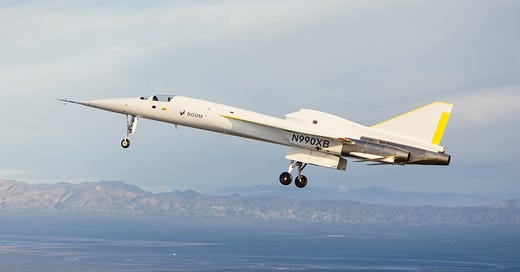Is Supersonic Or Hypersonic Flight The Future?
It’s been twenty 21+ years since the last Concorde flight. Since then, the efficiency of large body planes has improved. So has the speed they travel at. Nevertheless, the allure of faster than sound travel has remained tantalizingly out of reach. That could change by the end of the decade.
Boom Supersonic successfully tested their reduced scale supersonic plane today. The prototype hit a top speed of 1.12 times the speed of sound.
The company aims to be the first to bring a supersonic civil aircraft to market again. That means it will have to achieve greater than Mach-1 without creating a sonic boom. That was a significant limiting factor for where the Concorde could fly. It will need to be fully addressed to allow for significant growth of the supersonic markets.
The road to achieving that goal has been lengthy. Today there are at least two projects pursuing the goal of quiet supersonic travel.
Boom Supersonic has made splashy headlines with its testing and the company is sufficiently well funded to get at least a full-size prototype into the air.
Meanwhile, the X-59 designed by Lockheed Martin for NASA aims to do the same thing. That is probably more designed for military, than civilian, applications but the technology is largely the same.
SpaceX’s rockets don’t have the challenge of producing sonic booms over land because they travel in low earth orbit.
Elon Musk has opined that the future of long distance travel is by rocket. That would also be significantly faster than any plane ride. Of course it would also require some major changes to airspace laws around the world. The trips would also probably come with some significant health warnings given the stresses our bodies would endure.
A Boeing 777 costs about $375 million and runs for about $28,500 an hour. It carries a maximum of 368 passengers.
The SpaceX super heavy costs $80 million to build and aims to get launch costs to around $10 million for orbit. Presumably, suborbital, shorter trips would be cheaper.
Getting to those numbers will require significantly more flights. It has capacity for around 1000 passengers. That’s not cost effective today, but greater volume would change the economics.
It seems likely that Boom Supersonic aims to come in somewhere between those two options. The flights will be quick and will probably cost about the same as the old Concorde flights.
If we look a decade ahead, the economics of space flight are likely to continue to improve. There is significant talk about developing nuclear propulsion for spacecraft. That is more efficient which allows for faster flights and larger payloads.




